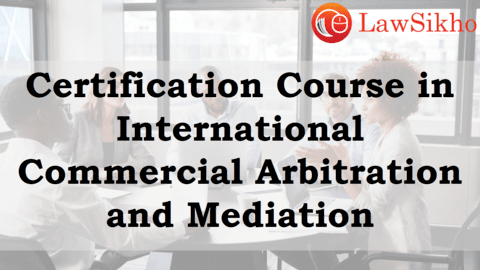This article has been written by Sanjay M Jawle, pursuing a Certificate Course in International Commercial Arbitration and Mediation from LawSikho. It has been edited by Prashant Baviskar (Associate, LawSikho) and Ruchika Mohapatra (Associate, Lawsikho).
Table of Contents
Introduction
Specialisation in today’s world
In the highly competitive world of business, there is an ever-increasing tendency to specialize and perfect the complex products and services in which one deal. Due to this excessive stress on specialization, there is less tendency to do jobs, even small ones, in which there is no specialization. The economies of scale also point towards such a tendency. It is more economical to subcontract jobs that are infrequently done.
Increased need for contracting, subcontracting and contracting patterns
A consequence of this is that there is a large amount of contracting and subcontracting at various levels in a single project with different types of contracts and sub-contracts. One such type of contracting can be of the type where an individual firm or a corporate enters into a contract with a contractor who in turn enters into a subcontract with another and so on. Another type of contracting can be where the individual firm or a corporate enters into different contracts for different parts of the project and they, in turn, enter into a subcontract. The third type of contracting can be where an individual firm enters into a contract with a consortium and each member of the consortium enters into sub-contracts with different parties as per its needs. We thus see that in any project there are multiple contracts depending upon its business type, expertise, and experience, expertise, and equipment sought, etc.
Criticality of timely completion of projects and disputes
The completion of the main contract is thus dependent upon the completion of each of the various contracts. A failure in the fulfillment of the contractual terms in any of the contracts anywhere in the chain has a cascading effect and leads to the eventual failure of the main contract which leads to the blame game and multiple disputes.
Resolution of disputes
Traditional method of resolving disputes
The traditional way of settling these disputes is to refer each of these disputes or all such disputes to the Courts or tribunals as per the individual contract clauses and the understanding of each of the firms or contractors. However, this type of dispute resolution has some major flaws like the disputes may come up for hearing at different times and the awards in each of these cases may be inconsistent with each other and may or may not have any effect on the final expected outcome.
Multi-Party Resolution of Disputes (arbitration)
Multi-party arbitration means arbitration involving more than two parties. One of the solutions to overcome the shortcomings of individual dispute resolution is to have consolidated proceedings or concurrent proceedings with common arbitrators. The primary objectives of having consolidated multi-party dispute resolution are to limit the time, delay, and costs associated with resolving the dispute.
Advantages of consolidated multi-party arbitration
In consolidated multi-party arbitration, all the submissions are made before a single arbitral tribunal- all the evidence is placed before it, all hearings are also conducted before the same tribunal. Consequently, the danger of inconsistent results is avoided. This is one of the major advantages of consolidation of proceedings. As a direct result of this, the cost of resolving all such related disputes can be considerably lower than the cost of resolving disputes in separate proceedings. Also, all the Arbitral Awards are more likely to be aligned and consistent.
Limitations of multi party arbitration
However, the consolidation of proceedings has its own set of limitations or shortcomings. Multiple parties obviously mean multiple agreements having a wide variety of dispute resolution clauses. If, for example, a dozen parties are involved in multi-party contracts having different arbitration clauses, various problems may arise like
- Who should be the parties to the dispute?
- The Arbitral Tribunal shall consist of how many arbitrators and on what basis?
- What should be the process of appointing the arbitrators?
- What is the amount of fee and cost to be borne by each of the parties?
- Should there be one Award or several Awards?
- The problem of jurisdiction shall be a major issue that may have to be resolved, as each party may be located or headquartered in different locations and may have selected a different jurisdiction.
- There will also be various administrative problems which will have to be overcome during the course of the proceedings.
Causes of the limitations in multi-party arbitration
All of the above-mentioned limitations for multi-party arbitration arise primarily from two main reasons viz;
(i) Party autonomy: Due to which the two contracting parties have the power to choose their own set of variables leading to arbitration.
(ii) Confidentiality: Due to confidentiality issues, the two disputing parties may not want a third party to be present at the time of the submissions, pleadings, hearings, evidence, or making of the award or any other time which may be inconvenient to the parties. Due to this, consolidated proceedings can also become a slow, time-consuming, and costly process, but it is still capable of giving more consistent and aligned results.
Therefore, despite all the above limitations, consolidated or concurrent multi-party arbitration is increasingly being preferred in complex multi-party disputes. However, a lot of hurdles need to be overcome to resolve such multi-party, multi-contract disputes.
Efforts taken to facilitate multi-party arbitration
Efforts taken by countries
Though consolidation of proceedings is the way forward in the resolution of multi-party disputes, not many legislations around the world provide for it. Section 35 of the English Arbitration Act, 1996 provides that, arbitral proceedings can be consolidated or concurrent hearings can be held subject to the agreement between the parties. Failing such an agreement, the tribunal has no power to order consolidation of proceedings or holding of concurrent hearings.
The situation is similar in many other countries as well. The Courts or Tribunals do not have the power to order consolidation of hearings or hold concurrent hearings in the absence of an agreement between the parties. However, Courts in the Netherlands, in domestic arbitration cases in Hong Kong, and in some jurisdictions in the United States of America have the power to do so.
Efforts taken by arbitral institutions
Although UNCITRAL or the countries across the world have, so far, not taken the initiative to facilitate the consolidation of arbitrations, it is heartening to note that several Institutions have started taking the lead in this matter.
The London Court of International Arbitration (LCIA) Rules (2014), under article 22.1(x), empowers the Arbitral Tribunal to order the consolidation of the arbitration with one or more other arbitrations commenced under the same arbitration agreement or any compatible arbitration agreement(s) between the same disputing parties, provided that no arbitral other tribunal has yet been set up by the LCIA Court for such other arbitrations.
Article 22.1(viii) of LCIA Rule 2014, empowers the Arbitral Tribunal to decide on an application from one of the parties for allowing a third party to be joined in an arbitration provided such third party and the applicant have consented, in writing, to such joinder.
Rule 9.1 and Rule 9.2 of the Institute of Civil Engineers (ICE) Arbitration Procedure, where the same arbitrator has been appointed for resolution of different disputes involving at least one common party, empowers the arbitrator, on the application of a party and is subject to certain rules, to order concurrent hearings for disputes primarily involving the same subject with different parties.
Article 7 of the Chartered Institute of Arbitrators (CIArb) gives a wide range of powers to the arbitrators to consolidate proceedings and/or hold concurrent proceedings. While, Art 7.3 gives powers to the arbitrator to consolidate proceedings or hold concurrent hearings where the same arbitrator is appointed to arbitrate on common issues, whether or not the parties involved are the same., Art 7.4 gives further powers to the arbitrator to give directions in cases where consolidation or concurrent hearings are being held. Art 7.5 clarifies that where the proceedings have been consolidated, the arbitrator may give a consolidated award on the subject matter of the dispute unless the parties otherwise agree whereas Art 7.6 clarifies that where concurrent hearings are being held, the arbitrator will give separate awards unless the parties otherwise agree.
Observations
It is thus clearly seen from the above that there is very little initiative from the global organisations like the UN or from the various countries in coming up with legislation or Rules to resolve this issue. However, several global arbitral institutions have started framing rules and guidelines to facilitate multi-party arbitration and consolidation of proceedings or holding of concurrent proceedings. However, the pace of such reforms is indeed very slow.
Conclusion
In order to increase the pace of reforms related to multi-party arbitration, UNCITRAL has to take the lead and amend not only the UNCITRAL Arbitration Rules which can serve as guidelines to Arbitral Institutions across the globe but also amend the UNCITRAL Model Law on Arbitration as well so that countries can incorporate them into their legislation. This alone will set the pace for speeding up multi-Party arbitration.
However, until such time that these amendments are made and brought into effect, it is necessary for individual parties, in their own business and financial interests, to incorporate an affirmation in their arbitration clause that in case of disputes involving more than one party, they agree to multi-party arbitration, consolidation of proceedings and/or holding concurrent hearings.
References
- MULTI-PARTY ARBITRATION: IDENTIFYING THE ISSUES – Sigvard Jarvin —https://digitalcommons.nyls.edu/cgi/viewcontent.cgi?article=1249andcontext=journal_of_international_and_comparative_law
- Practice Guideline 15: Guidelines for Arbitrators on how to approach issues relating to Multi-Party Arbitrations
- https://scienceimpact.mit.edu/multi-party-dispute-resolution
- https://www.legislation.gov.uk/ukpga/1996/23/section/35
- https://www.law.cornell.edu/cfr/text/18/401.78
- https://uncitral.un.org/
- https://www.lcia.org/Dispute_Resolution_Services/lcia-arbitration-rules-2014.aspx#Article%2022
- https://www.ice.org.uk/ICEDevelopmentWebPortal/media/Documents/Disciplines%20and%20Resources/09-1-ICE-Adjudication-procedure-2012-04-30.pdf
Students of Lawsikho courses regularly produce writing assignments and work on practical exercises as a part of their coursework and develop themselves in real-life practical skills.
LawSikho has created a telegram group for exchanging legal knowledge, referrals, and various opportunities. You can click on this link and join:
https://t.me/joinchat/L9vr7LmS9pJjYTQ9
Follow us on Instagram and subscribe to our YouTube channel for more amazing legal content.












